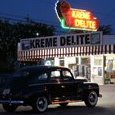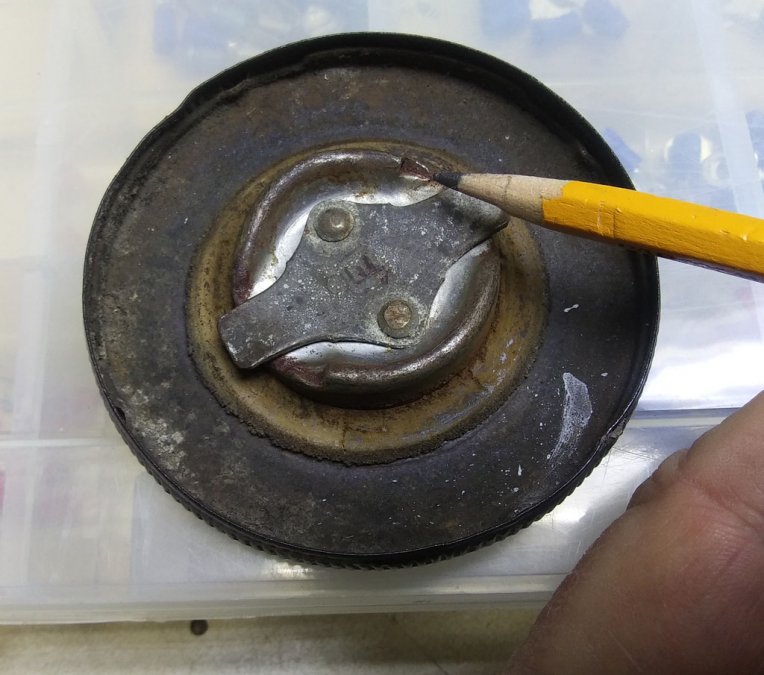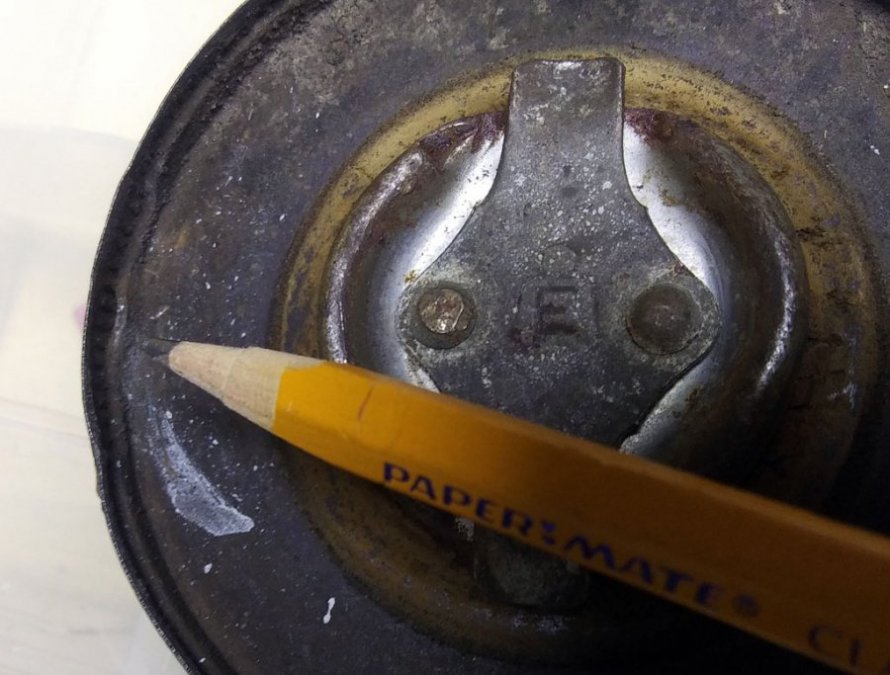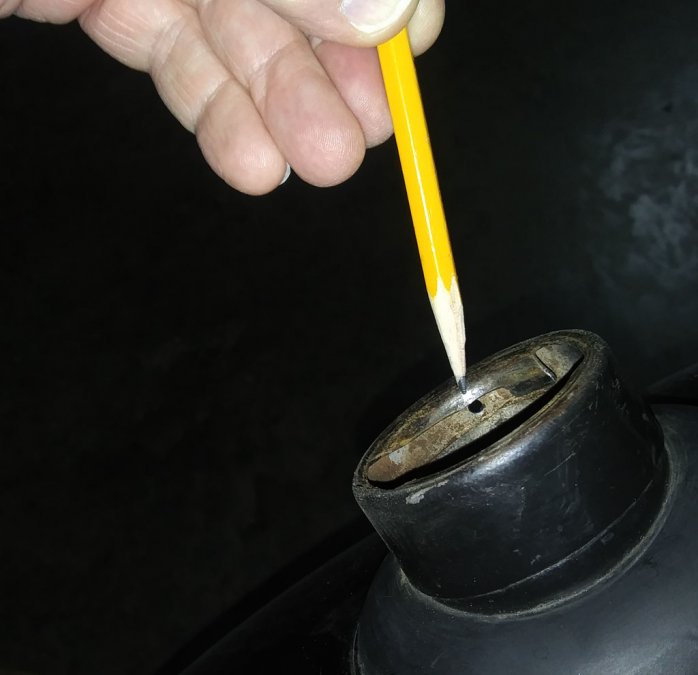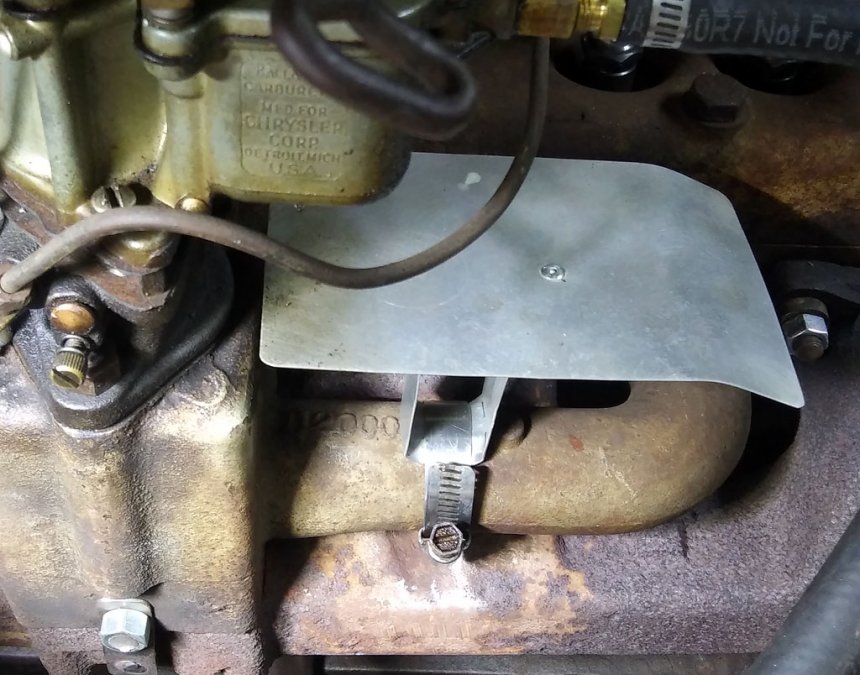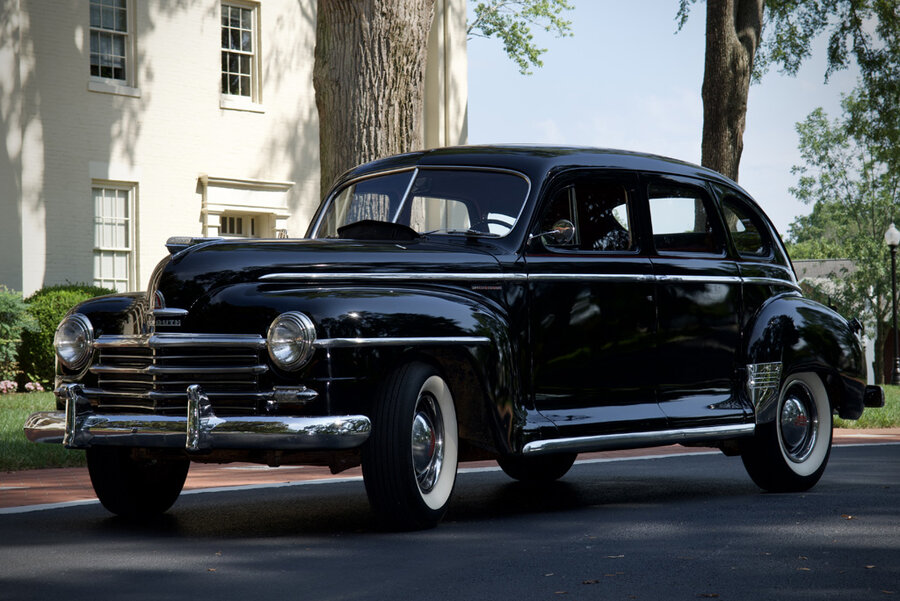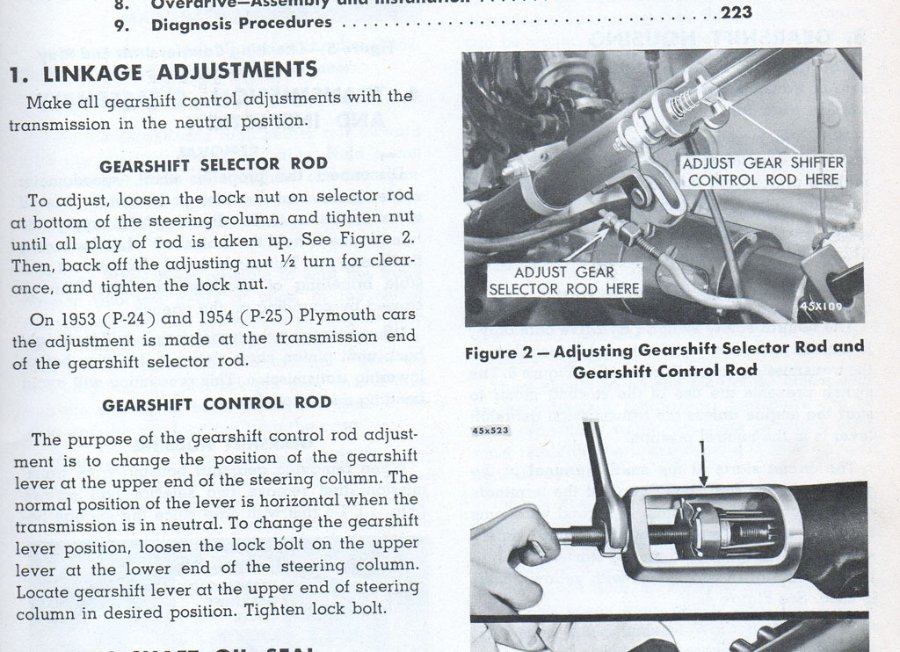-
Posts
2,561 -
Joined
-
Last visited
-
Days Won
83
Content Type
Links Directory
Profiles
Articles
Forums
Downloads
Store
Gallery
Blogs
Events
Everything posted by Sam Buchanan
-
So.......was it just out of gas??
-
Ok, sounds like you have a non-stock tank/vent installation. You can ignore what I suggested provided you are positive the tank is venting properly. What is a "vent contraption"? ? If fuel isn't getting to the carb there just aren't many reasons why that would be occurring, the fuel system is extremely simple. Just start at the tank and positively verify all is as it should be as you work your way to the carb.
-
How is your tank vented? Is it via the cap? (probably is) What happens if you leave the cap off after you get it running? Does it continue to run? The vents in the cap are very small openings, they may be corroded and blocked. Here is an opening inside the filler neck. And this is an opening outside the neck. These passages must be clear in order for the tank to vent and allow gas to flow to the carb. Here is a backup vent I drilled in the filler neck when I was troubleshooting fuel flow on my P15. I ended up replacing the ENTIRE fuel system and it has been flawless for the past three years. I still have the drilled hole in the neck since I'm using the original cap.
-
Ok, that's fine. Consider the suggestions offered above and get back with us.
-
If your car was running fine when the mechanical pump quit, it should run fine with no adjustments on the electric pump.....remove one pump, install the other. The carb shouldn't be able to tell how the fuel is getting delivered from the tank. The only way the electric pump could malfunction is if it is delivering fuel at a high enough pressure to over power the needle valve. If fuel isn't overflowing the carb bowl, pump pressure is probably fine. Something else has changed, unfortunately you have changed so many things now that troubleshooting has been complicated. I suggest you put everything back to book specs....float level per spec, timing per spec, and suggested idle mixture per the recommendation in the manual. Only after you have a solid baseline can you start diagnostics.....but most likely your flattie will be happy once you do all the above. But you did say one thing that might be concerning; "Looking down the throat of the carb I see gas squirting." Do you mean gas squirting without moving the throttle with the pump running or do you mean when the accelerator pump shoots a stream? Please clarify, this could be a major issue if the pump is pushing fuel past the needle.
-
Maybe first just get it into solid driver status with the stock engine? You might like it as is. Congratulations on your new ride!
-
I'm not that hungry...... I did poke some of the links but I suspect the white paper link is long gone since it would be over eight years old by now, the site has probably be freshened since then.
-
Yep, that takes you to the Wheel and Tire Council propaganda site, but no link to the white paper....that I can find.
-
I couldn't find a link to the white paper.
-
Here is the shield I use, it is isolated from the carb. I don't know how effective it is but I've never had vapor lock problems. But that may also be due to running a full-time pusher electric fuel pump. Spacers are usually a phenolic material, but most of these cars probably never had a spacer.
-
Do you have the correct float?
-
Sources, we need sources. The reason the pecan shells in my backyard are empty is due to an over population of squirrels. The sources I looked at state DOT 3 is glycol based similar to many solvents such as paint thinner.
-
My RV-6 aircraft still has the fusible link in the avionics bus feed I fabricated 25 years ago when it was wired. Fusible links were a new thing in aviation back then and there was a lot of misunderstanding about them. We used a 4" length of wire a few gauges smaller than the primary wire (don't recall the formula, may have been four gauges smaller) and covered it with fiberglass non-flammable insulation. The rationale was the link eliminated the need to carry a fat wire to the panel to a circuit breaker with the RFI it could cause and the unprotected wire behind the panel. If a breaker pops in flight it usually isn't a good idea to try a reset so the link is a good option. Just another datapoint.
-
I'm not overlooking anything. You have already stated that shipping cost makes returning the tires impractical in addition to you paying for demount/mounting along with dealing with a third party and you don't expect Coker to ship you a new ship pre-paid. So your choice is to either keep the tires or try to sell them at a significant loss. All I'm advocating is that before doing something drastic........just try cleaning the tires! Is that an unreasonable suggestion???? Personally, I couldn't care less what you decide to do, I'm just perplexed as to why you haven't tried the most sensible and practical option first. But my dog ain't in this hunt.......best wishes for a satisfactory resolution.
-
I am amazed that you are thinking about selling tires and apparently you haven't tried cleaning them yet................time for a few deep breaths. I'll repeat....I've seen similar discoloration and it cleans off the sidewall with about 90 seconds of effort and a scrubbing pad. Compared to the efforts I go to keeping the P15 in top mechanical shape cleaning sidewalls gets lost in the noise....
-
Whitewalls are high maintenance if you want them to look “white”, they will discolor otherwise. I remember how much scrubbing my dad enforced on us to keep the family’s ride whitewalls looking nice. If someone doesn’t want to put out that effort blackwalls are probably a better option.
-
I still think you will be surprised by how well the white will clean up. I’ve seen similar when I waited too long between cleaning but it has always come back with some scrubbing with a fiber pad and good cleaner.
-
Have you tried getting pretty aggressive with a scrubbing pad? I use a concentrated household cleaner and scrubbing pads from the local Dollar Store for maintaining the whitewalls. Simple Green works pretty good, too. The pads are the fiber ones, not the metal oven pads. My Cokers get a thorough scubbing 3-4 times a year, they still look good after three years of frequent driving.
-
A combination of through-bushings and large-area washers will allow you to bolt to a boxed tube. If you can gas weld I think you will find MIG to be a pretty easy transition.
-
The bolts were about 1/8" too long......and that flywheel is heavy, I huffed and puffed with it more than with the tranny until I gave up and pulled the bearing cap! ?
-
I had to remove the rear crank cap to be able to remove the flywheel bolts. I understand that isn't necessary in all applications but definitely was in mine....I think my memory is correct about this.......


